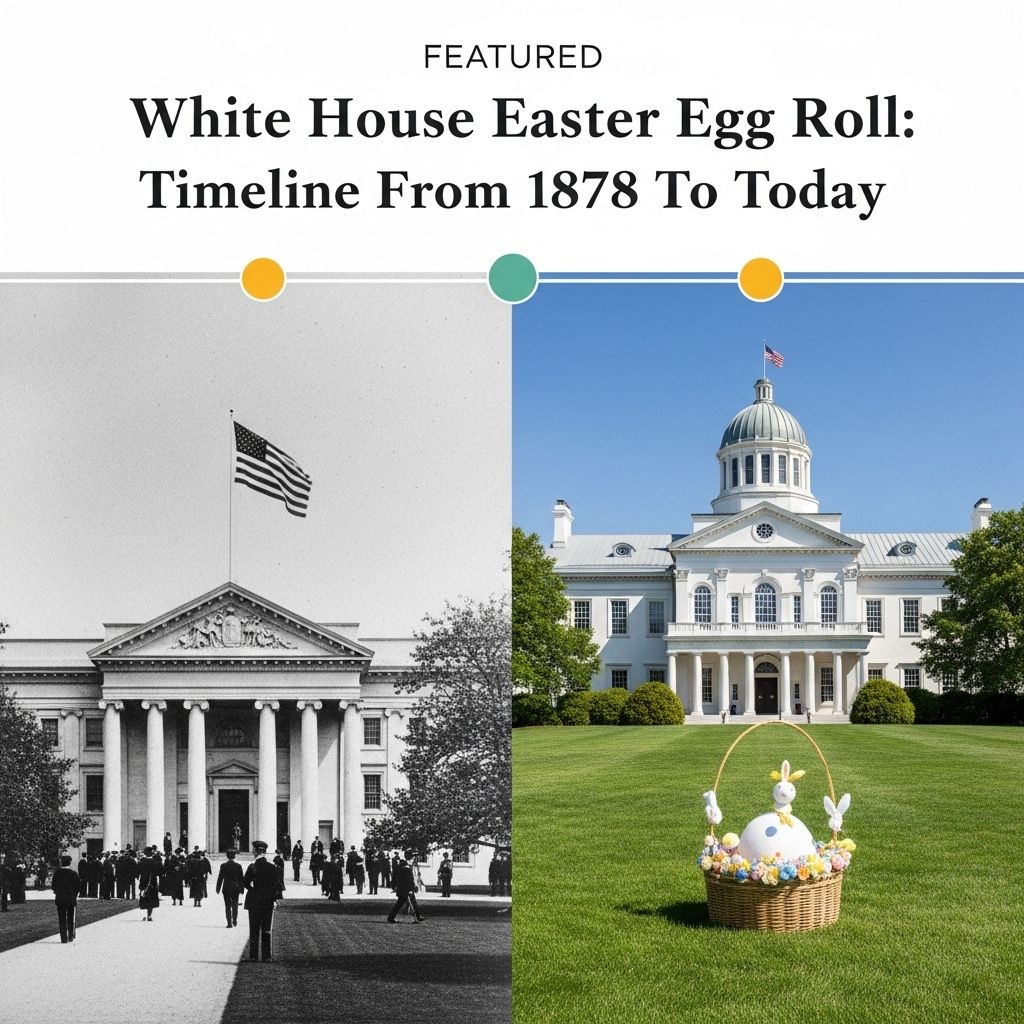A Colorful Tradition: The History of the White House Easter Egg Roll
A spring festival that evolved with music, broadcasts, and cherished keepsakes.

Introduction to the White House Easter Egg Roll
The White House Easter Egg Roll is one of the most iconic and enduring traditions in American history. It has brought joy and excitement to countless children and families over the years, symbolizing the vibrant spirit of spring and the connection between the President and the public. The event has evolved significantly since its inception, incorporating various activities and innovations while maintaining its core charm.
## Origins of Easter Egg Rolling
The tradition of rolling eggs on Easter has its roots in European customs, where in Scotland, for instance, oatcakes were rolled down hills during the holiday. This practice eventually transitioned to using eggs, which were seen as symbols of new life and fertility during the Easter season. In Washington D.C., the tradition of egg rolling began informally on the grounds of the U.S. Capitol. However, following concerns about damage to the landscape, Congress passed the Turf Protection Law in 1876, effectively ending the practice on Capitol grounds.
## The First White House Easter Egg Roll
In 1878, President Rutherford B. Hayes stepped forward to save the tradition by opening the White House South Lawn to the public. This marked the beginning of the White House Easter Egg Roll as we know it today. The event was initially informal but gradually became more structured and organized over time.
## Evolution of the White House Easter Egg Roll
Over the years, the White House Easter Egg Roll has evolved to include various activities and innovations:
–
Music and Celebrations
: In 1889, President Benjamin Harrison added music to the event, inviting the United States Marine Band to play lively tunes while children played on the lawn.–
Radio Broadcasts
: In 1929, the event was broadcast on radio for the first time, allowing a wider audience to enjoy the festivities.–
Wartime Cancellations
: During World War II, the event was canceled due to security concerns and wartime rationing. It resumed after the war but faced additional challenges during the Truman administration due to renovations at the White House. Modern Developments
More recent innovations include:
–
Collectible Wooden Eggs
: In 1981, President Ronald Reagan and First Lady Nancy Reagan introduced collectible wooden eggs signed by the President and First Lady, a tradition that continues today.–
Online Broadcasts
: In 1998, the event was broadcast live on the internet for the first time, and in 2009, tickets were distributed online for the first time.## Impact and Cultural Significance
The White House Easter Egg Roll is more than just a fun event; it symbolizes the connection between the President and the American people. It has been a constant source of joy and community engagement, even during difficult times like wars and pandemics. The event’s ability to adapt and evolve while maintaining its core spirit has made it a beloved tradition for generations.
## Challenges and Cancellations
Despite its enduring popularity, the Easter Egg Roll has faced numerous challenges:
–
Weather Cancellations
: Inclement weather has led to cancellations in several years, including 1959, 1964, 1978, 1984, and 2001.–
Pandemic Response
: The COVID-19 pandemic resulted in the cancellation of the event in 2020 and 2021.## Frequently Asked Questions (FAQs)
Q: When was the first White House Easter Egg Roll held?
A: The first White House Easter Egg Roll took place on April 22, 1878.
Q: Why was the event moved to the White House?
A: The event was moved from the Capitol grounds to the White House due to a law passed by Congress to protect the Capitol landscape.
Q: What significant innovations have been introduced over the years?
A: Innovations include the addition of music, radio broadcasts, collectible wooden eggs, and online ticket distribution and broadcasts.
Q: How has the event adapted to difficult times?
A: The event has been canceled during wartime and due to renovations, but it has always managed to resume and adapt to new circumstances, including the COVID-19 pandemic.
Conclusion
The White House Easter Egg Roll is a testament to the power of tradition and community engagement. From its humble beginnings to its current status as a national event, it continues to bring people together in celebration of spring and new beginnings. As the event continues to evolve, its core spirit remains unchanged – a symbol of connection between the President and the people.
References
- https://www.whitehousehistory.org/questions/what-is-the-history-of-the-white-house-easter-egg-roll
- https://www.nps.gov/articles/000/eisenhower-easter-egg-roll.htm
- https://www.whitehousehistory.org/origins-of-the-white-house-easter-egg-roll
- https://georgewbush-whitehouse.archives.gov/easter/history.html
- https://clintonwhitehouse3.archives.gov/WH/glimpse/Easter/index.html
- https://en.wikipedia.org/wiki/Egg_rolling
- https://www.youtube.com/watch?v=Z_xt9eHzoZs
- https://www.businessinsider.com/white-house-easter-egg-roll-white-house-traditions-in-history-2017-4
- https://www.nps.gov/whho/planyourvisit/easter-egg-roll.htm
Read full bio of medha deb












